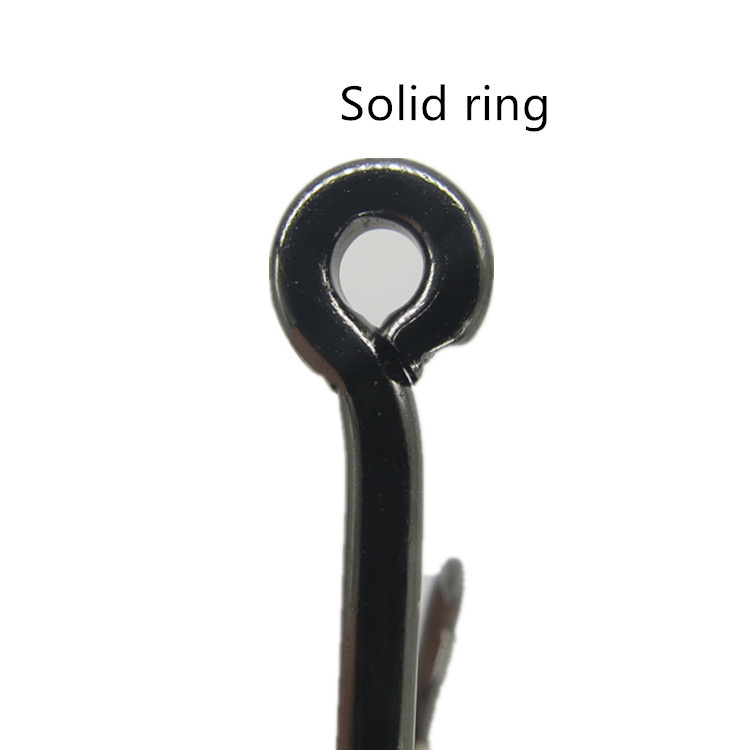As striped bass populations face increasing pressure from recreational and commercial fishing, regulatory measures have been implemented to promote sustainable practices. One key regulation gaining traction across Atlantic coastal states is the mandatory use of nonoffset circle hooks when fishing for striped bass with natural bait. This rule aims to reduce postrelease mortality, ensuring the survival of fish that are caught and released. Here’s a comprehensive guide to these regulations, the science behind them, and how anglers can adapt their techniques.

The Importance of NonOffset Circle Hooks
Nonoffset circle hooks are defined by their unique design: the hook’s point curves perpendicularly back toward the shank, and the entire hook lies flat when placed on a surface. Unlike traditional Jhooks or offset circle hooks, this configuration minimizes deep hooking, which occurs when a fish swallows the bait and the hook lodges in its throat or stomach. Studies show that guthooked fish suffer higher mortality rates due to internal injuries or stress, making nonoffset circle hooks a critical conservation tool.
The Atlantic States Marine Fisheries Commission (ASMFC) mandated the use of these hooks in 2021 as part of a broader effort to rebuild overfished striped bass stocks. Data indicates that postrelease mortality accounts for nearly half of all striped bass deaths annually, rivaling harvest numbers. By reducing deep hooking, nonoffset circle hooks improve survival rates by up to 50%.
Regulatory Requirements Across States
Coastal states from Maine to North Carolina have adopted regulations requiring nonoffset circle hooks when using natural baits like clams, squid, or live eels for striped bass. Key aspects of these rules include:
1. Scope of Application: The mandate applies to all anglers—shorebased, private boaters, and charter vessels—without exemptions for gear types. Even artificial lures augmented with natural bait (e.g., pork rind on a bucktail jig) fall under this rule.
2. Hook Specifications: Only inline (nonoffset) circle hooks are permitted. Offset hooks, where the point bends sideways, are prohibited due to their higher risk of gut hooking.
3. Penalties: Violations, such as using Jhooks with bait, can result in fines. For example, Connecticut imposes a $75 penalty per infraction.
States like New Jersey emphasize that compliance is not just about avoiding fines but also contributing to longterm fishery health. Anglers incidentally catching striped bass while targeting other species must still release the fish immediately if noncompliant gear is used.
Best Practices for Using NonOffset Circle Hooks
Adopting circle hooks requires a shift in technique. Here’s how to maximize effectiveness:
Avoid Setting the Hook: Unlike Jhooks, circle hooks are designed to selfset. When a striped bass takes the bait, resist the urge to jerk the rod. Instead, let the line tighten naturally as the fish swims away.
Match Hook Size to Bait: Larger baits like live menhaden require 8/0–9/0 hooks, while smaller baits (e.g., seaworms) pair well with 2/0–4/0 sizes. Ensure the hook’s gap isn’t obstructed by bait, which can impede hooking efficiency.
Prioritize barbless hooks: Barbless designs or crushed barbs simplify hook removal and minimize tissue damage. Pairing these with rubberized landing nets further reduces stress on the fish.

Enhancing Survival Rates PostCatch
Regulations alone aren’t enough—anglers must adopt responsible handling practices:
Minimize Air Exposure: Keep the fish in the water during hook removal. If lifting it, use wet gloves or a damp cloth to protect its slime coat.
Revive Exhausted Fish: Hold the fish upright in the water, allowing water to flow through its gills until it swims away strongly.
Avoid High Temperatures: Striped bass are more vulnerable to stress in warm water (>70°F). Plan fishing trips during cooler months or early mornings to reduce thermal stress.
The Science Behind the Regulation
Decades of research support circle hook efficacy. For instance, commercial longline fisheries saw doubled catch rates with circle hooks compared to Jhooks, alongside reduced deep hooking. In Maryland’s Chesapeake Bay, mandatory circle hook use for livelining since the 1990s has contributed to stabilized striped bass populations.
Historical evidence even traces circle hooks to preColumbian fishing tools, highlighting their timetested design. Modern adaptations prioritize both conservation and angler success, proving that sustainable practices need not compromise results.
Conclusion
The shift to nonoffset circle hooks reflects a growing recognition of recreational fishing’s impact on striped bass stocks. By adhering to these regulations and refining techniques, anglers play a direct role in conserving this iconic species. As states continue to refine policies—such as North Carolina’s 2025 closure of Roanoke River harvests—the collaboration between regulators, scientists, and the fishing community remains vital.
Whether you’re a seasoned angler or new to striped bass fishing, embracing nonoffset circle hooks ensures future generations can enjoy the thrill of the catch. For more details on regional regulations, visit your state’s wildlife or fisheries website.
*Note: Always verify local regulations before fishing, as rules may vary by waterbody and season.*